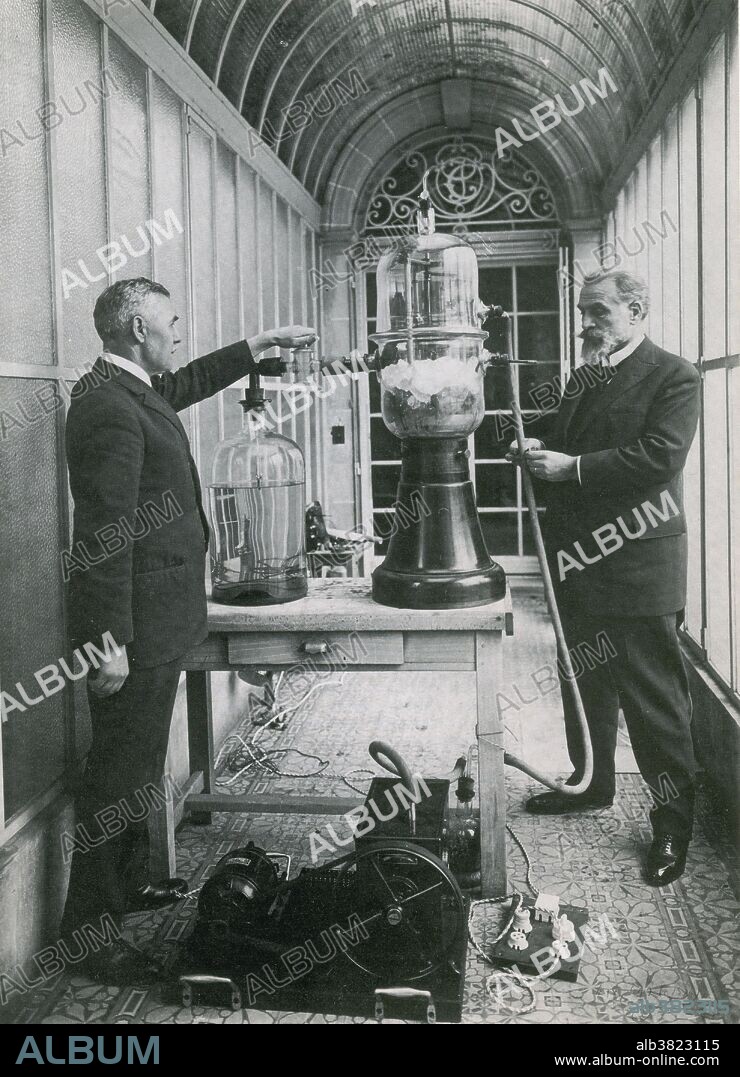alb3823115
Georges Claude, French Engineer

|
Ajouter à une autre Lightbox |
|
Ajouter à une autre Lightbox |



Avez-vous déjà un compte? S'identifier
Vous n'avez pas de compte ? S'inscrire
Acheter cette image.
Sélectionnez l'usage:

Titre:
Georges Claude, French Engineer
Légende:
Voir la traduction automatique
Claude in laboratory with unidentified assistant, 1926. Georges Claude (September 24, 1870 - May 23, 1960) was a French engineer and inventor. He is noted for his early work on the industrial liquefaction of air. The system enabled the production of industrial quantities of liquid nitrogen, oxygen, and argon. He developed neon tube lighting to exploit the neon that was produced as a byproduct of his air liquefaction business. He developed techniques for purifying the inert gases within a completely sealed glass tube and a design for minimizing the degradation of the electrodes that transfer electrical current from the external power supply to the glowing gases within the sign. Neon lighting quickly became a popular fixture in outdoor advertising. Visible even in daylight, people would stop and stare at the first neon signs for hours, dubbed "liquid fire." He also experimented on generating energy by pumping cold seawater up from the depths. Considered by some to be "the Edison of France", he was an active collaborator with the German occupiers of France during the Second World War. He was condemned to life imprisonment, and was imprisoned. In 1950 he was released from prison, with acknowledgment of his research on ocean thermal energy conversion. He died in 1960 at the age of 89.
Crédit:
Album / Science Source / New York Public Library
Autorisations:
Modèle: Non - Propriété: Non
Questions sur les droits?
Questions sur les droits?
Taille de l'image:
3208 x 4440 px | 40.8 MB
Taille d'impression:
27.2 x 37.6 cm | 10.7 x 14.8 in (300 dpi)
Mots clés:
CÉLÈBRE • CELEBRITE • CHERCHEUR • DECOUVREUR • EUROPÉEN • EXPLORATEUR • HOMME • INGÉNIERIE • INGENIEUR • INVENTEUR • PERSONNAGES • PERSONNALITÉS • PERSONNE • RECHERCHE • XXE SIECLE
 Pinterest
Pinterest Twitter
Twitter Facebook
Facebook Copier le lien
Copier le lien Email
Email
